To this day, mankind still cannot explain the emergence of this type of tree.
On the planet we inhabit, there are countless strange phenomena that remain unexplained. Among these, the most renowned is the unique Dragon’s Blood tree located on Socotra Island.
The “Alien” Island
Socotra Island is part of an archipelago off the coasts of Yemen and Somalia. This place is often likened to a distant planet due to its unique and fascinating vegetation, unlike anywhere else. Socotra is also referred to as a part of the “lost world,” as people from many countries have never heard of it and are unaware of the wonders this island possesses.
Socotra Island belongs to the Republic of Yemen and is a part of the Indian Ocean. The inhabitants of the island have a distinct culture and language. UNESCO has designated this area as a MAB (Man and Biosphere) reserve.
Most visitors to Socotra are scientists and those interested in ecotourism. The scientific community highly values Socotra as it is one of the rare places with biodiversity, hosting a rich and unique flora and fauna: 90% of reptile species and 95% of terrestrial snail species on this island are not found anywhere else in the world.
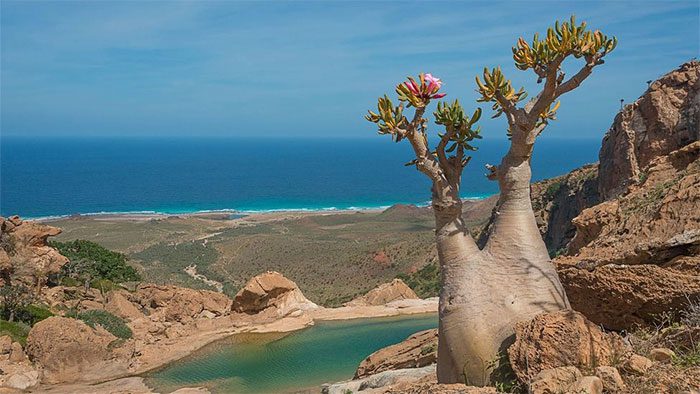
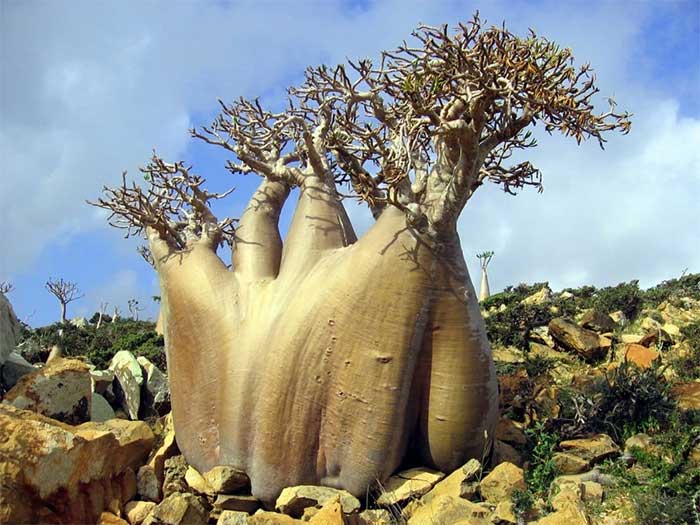

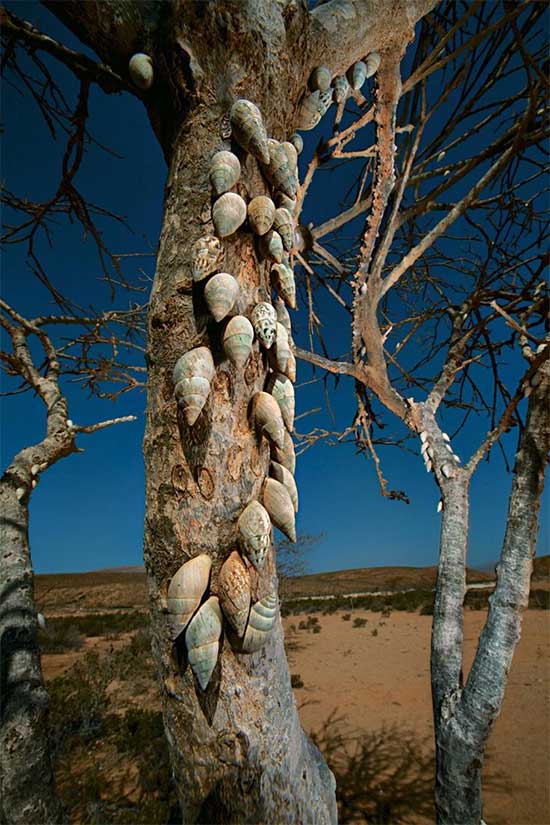
All landscapes in Socotra are unique and special.
The long-term geological isolation and harsh climatic conditions of Socotra have resulted in a spectacular and unique plant system. According to research by the Middle East Plant Research Center, up to 307,825 (37%) of the plant species here are endemic. Among them, 27 extremely rare species are listed in the Red List and are under protection.
Socotra surprises everyone with over 800 species of plants and animals that you cannot find anywhere else on this planet. One of the most special plants on this archipelago is the Dragon’s Blood tree.
The Bizarre Dragon’s Blood Tree
The Dragon’s Blood tree (Dracaena draco) has an umbrella-like shape. Its formation and growth process is also highly unique. When the tree is young, it has a single stem.
After about 10 to 15 years, the trunk stops growing, and white flowers with a fragrant scent similar to lilies appear. Many berries can be seen as the flowers fade, followed by the emergence of new shoots, and the tree begins to branch out.
Each branch grows for about 10 to 15 years before producing secondary branches. These secondary branches then produce more branches. It takes about 10 years for them to reach a height of about 120 cm, but afterward, they grow faster.
The most unique feature of this tree is its sap, which is red like blood, sour, and slightly pungent. This is why it is called the Dragon’s Blood tree. According to legend, the first Dragon’s Blood tree was born from the blood of an injured dragon fighting an elephant. Since then, the sap of this plant has been red like blood, giving it the name “Dragon’s Blood tree.”
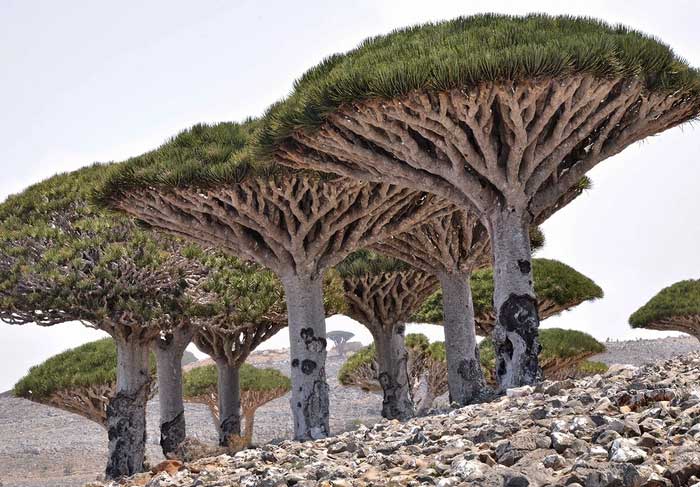
The Dragon’s Blood tree has an umbrella-like shape.
The sap of this tree is not only unique in color but also provides many benefits to humans. Since ancient Roman times, the sap of the Dragon’s Blood tree has been praised and widely used in daily life.
According to the Global Trees Campaign, the people of Socotra use the fruit of the Dragon’s Blood tree as feed for cattle and goats. However, they only use a small amount. The sap is also used for medicinal purposes in folk remedies, such as healing wounds, boosting health, serving as a dye, making cosmetics, or creating the varnish for the famous Stradivarius violins.
The Dragon’s Blood tree is currently a proud symbol of Socotra. Its lifespan can reach hundreds of years, but this species is at risk of permanent extinction due to various reasons. Scientists predict that by 2080, 45% of the ideal habitat for the Dragon’s Blood tree may be lost.
Concerns About the Conservation of This Rare Tree
The IUCN (International Union for Conservation of Nature) classified the population status of the Dragon’s Blood tree as “endangered” in 2004. As of now, the status of this tree is alarmingly concerning.
Part of the reason stems from the reality of climate change. The Dragon’s Blood tree thrives when there is sufficient water, but unfortunately, the climate of Socotra is becoming drier.
Moreover, the extraction of sap and the use of the tree for firewood, along with the increasing number of tourists visiting the island, have affected the growth of the Dragon’s Blood tree. The locals on the island still face economic difficulties, making the conservation of this valuable tree even more challenging.
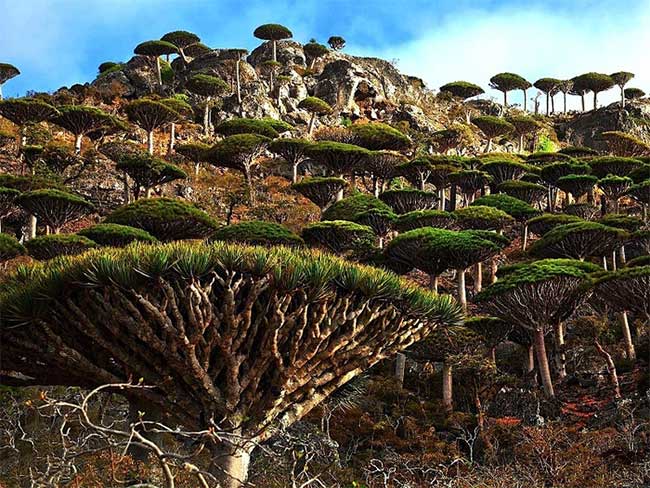
The conservation of the Dragon’s Blood tree faces many challenges.
It is very concerning that most of the Dragon’s Blood trees on Socotra are mature. The natural regeneration of this species is currently very fragile. Researchers are trying to change this situation by planting saplings in reserves. They are also studying life on the island and proposing appropriate conservation methods.
Hopefully, with the conservation efforts mentioned above, the unique creatures of Socotra Island, as well as the distinct human culture here, will achieve the desired results. The flora and fauna of the island contribute significantly to the biodiversity of our world.


















































